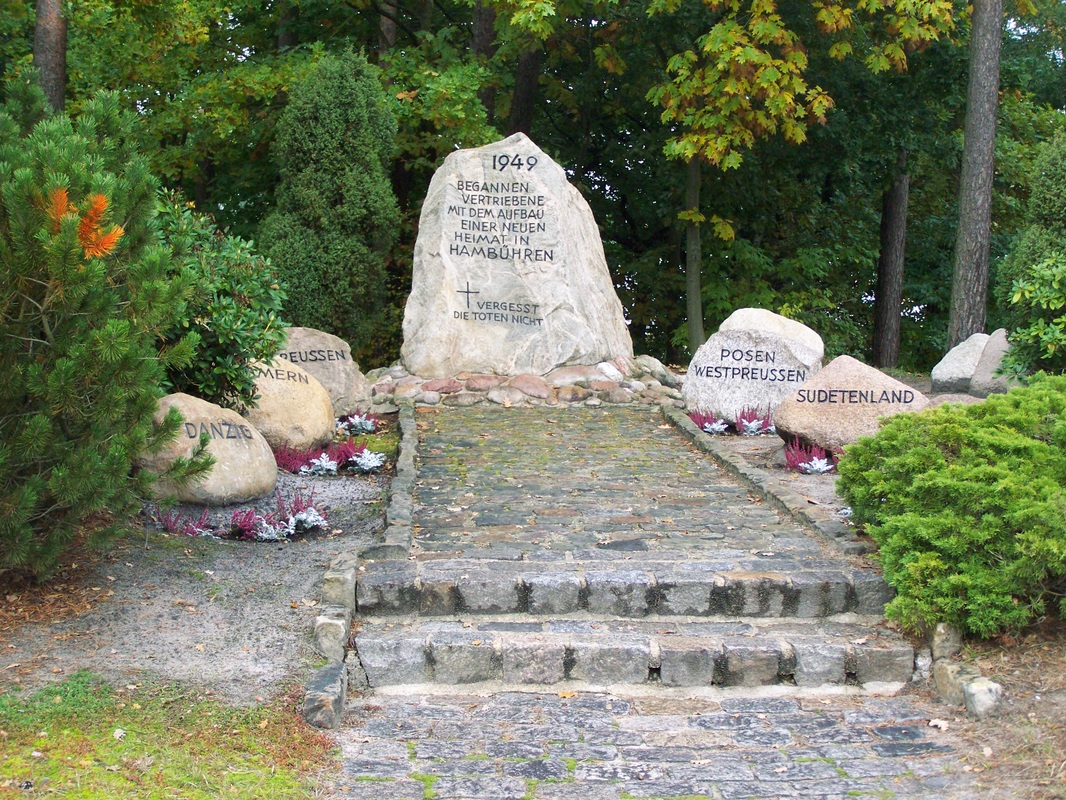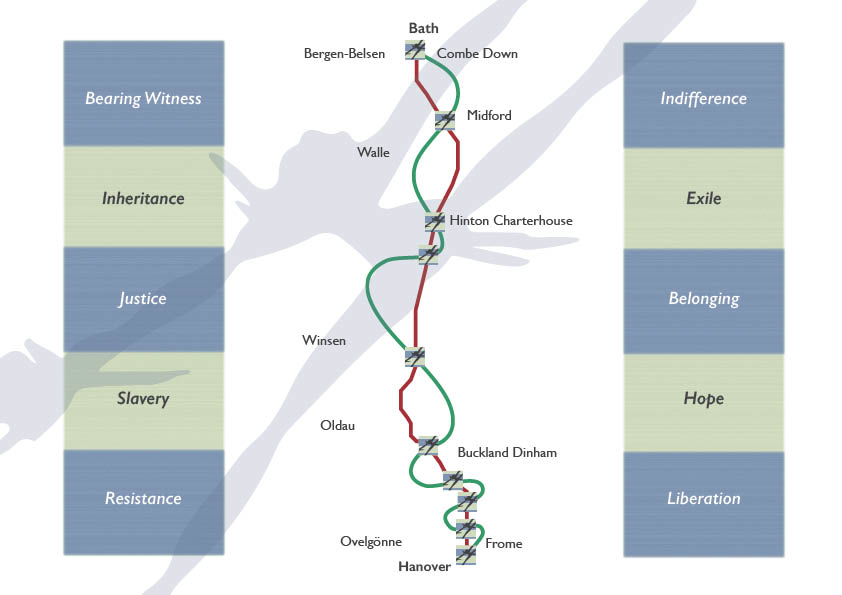|
Winter closes in on refugees crossing Europe, tragic events in Paris and under reported terror attacks elsewhere force us to think about the world we live in and the world we want to live in. Thinking about making the walk in Germany, refugees and the resonances we want to generate. In researching and planning the walk in Germany one of our key contacts has been Peter Jackson. Peter was on National Service in Lower Saxony in the 1950’s when the area was receiving displaced people, refugees, caught up in the massive post war migration and housing them in the same buildings that had been used during WW2 for forced labour. Whilst there Peter came across the Jewish women's camp at Ovelgönne, ironically named ‘Walsdeslust’. Layer upon layer of memory and history: last week Peter photgraphed a memorial to those refugees from parts of Germany that became Poland who had made their homes locally. Second generation and third generation refugees, survivors, witnesses, liberators, jailers, perpetrators...the memories mix, the stories intertwine like the routes on our map. Peter saw the physical remains of the slave labour camp where Esther was held and from where the death march she survived started. More than a shadow on the map now, an old shed shrouded in weeds and memories, what traces might be here? He met with an old man who as a boy remembers the inmates and guards with guns. On the site of the slave labour camp there is indeed a Garden Centre and it does indeed grow orchids. Somewhere in there to be unpicked is a motif and metaphor as powerful as the lion and the beehive on the Tate and Lyle’s Golden Syrup tin. Two walks, two stories of subjugation and appropriation: out of strength a certain sweetness, out of death a strange beauty. In the face of blood and fear and bullets this is the time to be making gestures of love and solidarity; reminding ourselves of the values of internationalism and human rights. If we can do nothing else we can walk in witness. Esther was liberated from Belsen to Sweden to become a refugee, beginning another long journey into exile.
0 Comments
Lorna Brunstein and I have just launched a crowdfunding campaign to support the last phase of the project that started in Somerset back in April. The walk originates in the testimony of her mother's forced march from a slave labour camp into the infamous Belsen death camp. In April we walked as close as we could to the death march route that I had transposed to Somerset, arriving at the old Jewish Burial Ground in Bath on 70th anniversary of the liberation of Belsen.
On 4 and 5 February 2016 we will walk the actual route of the death march starting on the anniversary of the day that the group of women, including Esther Brunstein, left the slave labour camp near Hannover for Belsen. We are raising money to properly support the walk live and enable it to be fully documented and thus to extend the connections and amplify the resonances from it.
Honouring Esther is a performative walking arts project that has as its heart the testimony of a Nazi death march survivor.
Through Esther Brunsteins personal story at stopping points along the way we will share her spirit of internationalism and humanity. This is a poignant and timely walk resonating with contemporary struggles as the refugee crisis across Europe continues. The walk will remind us that a refugee’s journey continues until they find safety and a welcome and a sense of belonging. For many it is a life long search. In the end we are all migrants and we all need safety, security, love and friendship. If you are interested in finding out more, check out the blog here: Honouring Esther |
Archives
February 2024
Categories
All
|




 RSS Feed
RSS Feed